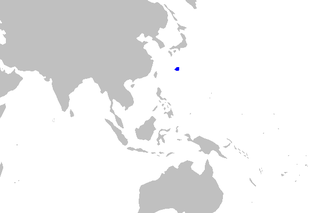
A tuna is a saltwater fish that belongs to the tribe Thunnini, a subgrouping of the Scombridae (mackerel) family. The Thunnini comprise 15 species across five genera, the sizes of which vary greatly, ranging from the bullet tuna up to the Atlantic bluefin tuna, which averages 2 m (6.6 ft) and is believed to live up to 50 years.

Mackerel is a common name applied to a number of different species of pelagic fish, mostly from the family Scombridae. They are found in both temperate and tropical seas, mostly living along the coast or offshore in the oceanic environment.

Herring are forage fish, mostly belonging to the family of Clupeidae.

Sardine and pilchard are common names for various species of small, oily forage fish in the herring family Clupeidae. The term sardine was first used in English during the early 15th century; a somewhat dubious folk etymology says it comes from the Italian island of Sardinia, around which sardines were once supposedly abundant.

Wobbegong is the common name given to the 12 species of carpet sharks in the family Orectolobidae. They are found in shallow temperate and tropical waters of the western Pacific Ocean and eastern Indian Ocean, chiefly around Australia and Indonesia, although one species occurs as far north as Japan. The word wobbegong is believed to come from an Australian Aboriginal language, meaning "shaggy beard", referring to the growths around the mouth of the shark of the western Pacific.

The billfish are a group of saltwater predatory fish characterised by prominent pointed bills (rostra), and by their large size; some are longer than 4 m (13 ft). Extant billfish include sailfish and marlin, which make up the family Istiophoridae; and swordfish, sole member of the family Xiphiidae. They are often apex predators which feed on a wide variety of smaller fish, crustaceans and cephalopods. These two families are sometimes classified as belonging to the order Istiophoriformes, a group which originated around 71 million years ago in the Late Cretaceous, with the two families diverging around 15 million years ago in the Late Miocene. However, they are also classified as being closely related to the mackerels and tuna within the suborder Scombroidei of the order Perciformes. However, the 5th edition of the Fishes of the World does recognise the Istiophoriformes as a valid order, albeit including the Sphyraenidae, the barracudas.

The rasptooth dogfish is a dogfish, found on the Kyushu–Palau Ridge in the northwest Pacific Ocean at depths of 360 m. Its maximum length is unknown. This species was originally described as Centroscyllium sheikoi, and subsequently allocated to the newly named genus Miroscyllium based on anatomical features not shared with other Centroscyllium. More recent molecular data suggest this species belongs to the genus Etmopterus, but as of June 2014 Miroscyllium sheikoi remains the valid name recognized by FishBase, the Catalog of Fishes World Register of Marine Species, and the IUCN

An anchovy is a small, common forage fish of the family Engraulidae. Most species are found in marine waters, but several will enter brackish water, and some in South America are restricted to fresh water.
The Congo barb is a species of ray-finned fish in the genus Clypeobarbus.
Barbinae are a subfamily of fish included in the family Cyprinidae. The taxonomy for this group has not been entirely worked out as some genera historically considered within it are still considered incertae sedis with respect to being a member of the family, and may be included here, while others may be moved to other subfamilies.
Clypeobarbus matthesi is a species of ray-finned fish in the genus Clypeobarbus from the Congo Basin.
Clypeobarbus is a genus of small cyprinid fishes native to Africa. Most species are restricted to the Congo River Basin, but C. pleuropholis is also found in the Chad Basin, while C. bellcrossi is from the Zambezi and C. hypsolepis is from rivers in Western Africa.
Clypeobarbus bomokandi is a species of ray-finned fish in the genus Clypeobarbus from the Congo Basin.
Clypeobarbus bellcrossi, the gorgeous barb, is a species of cyprinid fish native to Africa where it is found in the headwaters of the upper Zambezi River system. This species can reach a length of 9 centimetres (3.5 in) TL. It can also be found in the aquarium trade.
Clypeobarbus pleuropholis is a species of ray-finned fish in the genus Clypeobarbus.
Clypeobarbus pseudognathodon is a species of ray-finned fish in the genus Clypeobarbus from central Africa where it is known from Lake Mweru, the Lobo River and the upper Lualaba River. Its max size is 5.5 centimeters.
Clypeobarbus schoutedeni is a species of cyprinid fish endemic to the Democratic Republic of the Congo where it is only known from the Dungu River. This species can reach a length of 3.8 centimetres (1.5 in) TL.
Clypeobarbus breviclipeus is a species of ray-finned fish in the genus Clypeobarbus. It is endemic to the Kwilu River in the Democratic Republic of Congo.








